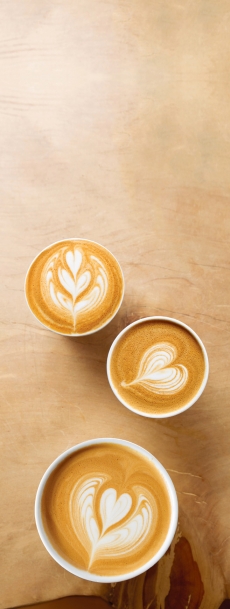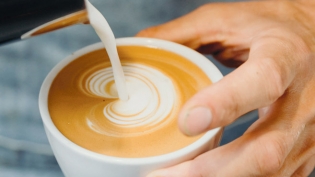Latte Love
Turning coffee into art brings caffeinated smiles to consumers.
With a practiced hand and metal pitcher of steamed milk, Andrew McMullen delivers a small but delightful part of our coffee culture.
“I love latte art,” says McMullen of the elegant flourish on your milk-based espresso drink. The barista trainer and head of education for Beacon Coffee likens the process to a chef plating a meal to make it as tasty for the eye as it is for the palate.
“Even though the latte art might not make the drink taste better, as a consumer coming up to a beautifully poured latte, it makes the experience better because it just looks gorgeous, just like a really, really nice meal,” he says.
When McMullen talks coffee, his enthusiasm reflects the joy he’s found as a barista, along with the goal of sharing the coffee industry’s bigger socioeconomic picture.
McMullen, 29, has been a Ventura County resident his entire life, except for a five-year stint as a college student at Humboldt State University earning degrees in geography and French. He began working in the coffee industry nine years ago.
“I just kind of fell into working in coffee,” he says. “At first it wasn’t something I was passionate about. It was just a job, but I kind of slowly fell in love with it—and particularly when I ended up moving back to Ventura and getting connected with Beacon Coffee. Their passion ignited my passion.”
Beacon’s owners, John and Jennifer Wheir, have set an example for other employers by forging a strong ethic and showing compassion for their employees, the growers who supply the beans and the community at large.
For McMullen, latte art’s relatability can be used as a stepping-stone for important conversations about the coffee industry with customers at the coffeehouse with locations in Ventura and Ojai.
And despite its seeming simplicity, latte art is a skill that takes a lot of practice to perfect, with the top three designs being the heart, tulip and rosetta.
“With properly steamed milk with silky microfoam, you can pour latte art on any drink,” says McMullen.
Not to be confused with latte pictures, which are etched with tools, free-pour latte art is created with a pitcher held at just the right height; milk, which must be properly steamed for the design to take shape; and, of course, the cup that holds your favorite hot beverage. McMullen can even make a free-pour design on your hot chocolate.
While there’s no official history of latte art, its U.S. roots may be traced to renowned Seattle coffee master David Schomer, who opened his first coffee cart in 1988. McMullen credits his own mastery of the art to Ventura County local Camille Reynolds, who, now in charge of bakery at Beacon, gave him a lot of tips and techniques that boosted his self-taught stylings.
At-home coffee drinkers can view video tutorials to start practicing their own latte art, but it’s critical that the milk—McMullen prefers whole, but you can use any type, even almond milk—be steamed to perfection.
If people at home are struggling, says McMullen, one hint could be that their machines don’t have a powerful steam wand. “Double- boiler machines [with a brew boiler and a steam boiler] tend to do better, but there is new technology out there was well.”
Even with proper steaming, there’s also the fact that the pour height and speed has to be just right, and achieving symmetry in the design may be difficult at first.
“But even the asymmetrical ones have a little character to them,” says McMullen. “There’s a beauty in the transience of latte art.”








